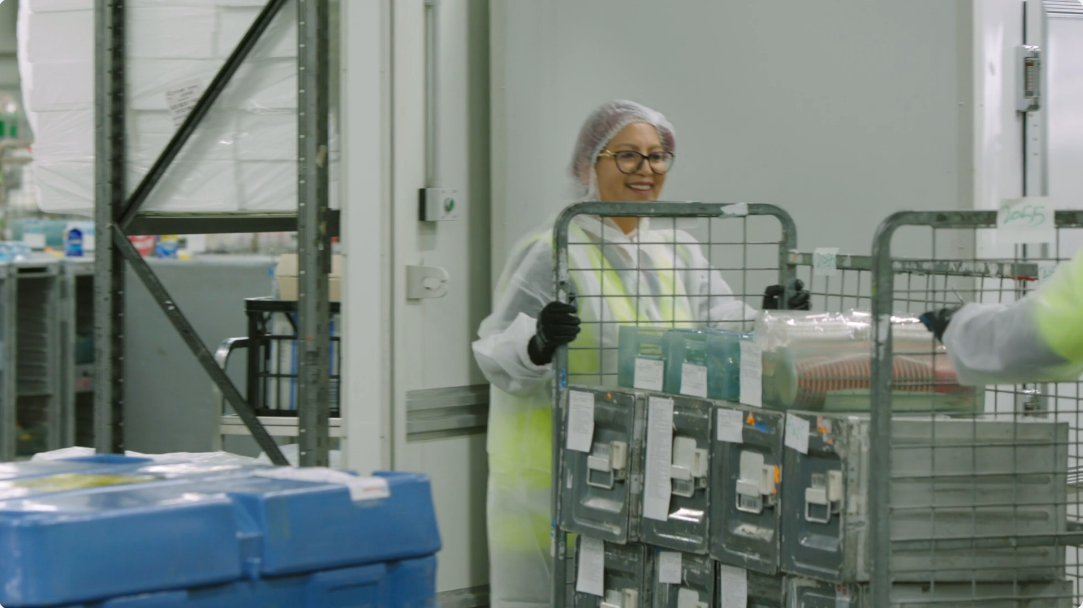As Chandler Macleod marks it’s 65th anniversary, we’re excited for the future of our industry.
Our propriety BestFit™ assessments stand at the forefront of our psychometric solutions. These advanced assessments leverage cutting-edge technology and decades of research to provide a comprehensive evaluation of candidates' abilities, personality traits, and cultural fit.
By integrating the latest advancements in psychometrics, such as computerised adaptive testing and game-based assessments, BestFit™ ensures precise and engaging evaluations. This evolution reflects our commitment to staying ahead of industry trends and meeting the dynamic needs of modern businesses. With BestFit™, we continue to set the standard for predictive accuracy and insightful talent management, empowering businesses to make informed decisions and build high-performing teams.
Our team work tirelessly to develop and launch new tools to meet the malleable needs of our clients and look forward to working with you to revolutionise the way you do business.
The Evolution of Psychometric Assessments
As Chandler Macleod marks it’s 65th anniversary, we’re reflecting on where we began – as Australia’s first firm of organisational psychologists. From our early days of predicting employee behaviour and identifying key success factors through psychometric assessments, a lot has changed. Let’s look at the evolution of psychometric testing and the methods we have in place today which ensure we continue to set the industry standard.
Our Beginnings
Our story begins when Alf Chandler and Doug Macleod licensed the Humm-Wadsworth Temperament Scale. This pioneering personality scale, developed in the early 20th century, was designed to evaluate various personality traits and temperaments and included dimensions such as emotional stability, social behavior, and personal adjustment. Originally used to match individuals to suitable roles in occupational settings, the scale provided early insights into personality profiling. Although it has been largely superseded by modern assessments like the Big Five personality traits and advanced computerised tests, the Humm-Wadsworth Scale remains a significant milestone in the evolution of psychometric evaluations.
Broadening Horizons
By the mid-20th century, psychometric testing had become a crucial tool in various fields, including education, industry, and the military. The use of psychometric assessments expanded significantly as organisations and institutions recognised their value in evaluating and predicting human behavior.
In the industrial sector, psychometric tests were increasingly utilised for employee selection and development, helping companies match individuals to roles that suited their abilities and personality traits. Despite some skepticism and criticism, particularly concerning the validity of personality assessments, the mid-20th century marked a period of growing acceptance and integration of psychometric testing into key decision-making processes, laying the groundwork for the sophisticated assessments used today.
Navigating Challenges of the Swinging Sixties
In the 1960s, a period marked by significant shifts in psychological theory, skepticism emerged regarding the reliability and validity of personality assessments. This critical perspective was notably articulated by Walter Mischel in his influential work, "Personality Assessment," which challenged the traditional belief that stable personality traits could consistently predict behavior across different situations.
Mischel's critique underscored the limitations of personality trait theories by emphasising the variability of human behavior in varying contexts. Despite this period of scrutiny, the subsequent decades witnessed a renewed interest in psychometric assessments. In the 1980s and 1990s, advancements in psychological research and methodology led to a resurgence in the use of these tools, largely fueled by the development and popularisation of the Big Five personality traits model.
This model, which identifies five core dimensions—extraversion, emotional stability (often referred to as neuroticism), agreeableness, conscientiousness, and openness to experience—offered a more robust and empirically supported framework for understanding and assessing personality. The Big Five model provided a comprehensive and nuanced approach to personality assessment, addressing many of the concerns raised by Mischel and facilitating a more refined and predictive understanding of individual differences in behavior.
The Digital Transformation
The arrival of the digital age marked a huge transformation in psychometric assessments, reshaping how these evaluations are conducted and interpreted. The introduction of computerised testing emerged as a game-changer, dramatically improving both the accuracy and efficiency of assessments. This shift was further amplified by the advent of Item Response Theory (IRT), a sophisticated statistical framework that allows for more precise measurement of psychological traits by accounting for varying levels of difficulty and individual differences.
IRT enhances the reliability of assessments by tailoring the difficulty of questions to the respondent’s ability level, thereby providing a more nuanced and accurate picture of their traits. Alongside these advancements, the integration of technology into psychometrics has seen the rise of game-based assessments, which blend traditional evaluation techniques with interactive, engaging formats. These game-based tools are particularly advantageous in high-volume recruitment scenarios, where they offer a novel and effective means of evaluating candidates' cognitive and emotional traits in an immersive and less conventional manner.
By leveraging elements of gamification, these assessments not only capture data more effectively but also increase participant engagement and reduce the potential for response bias, ultimately leading to more reliable and insightful evaluations. This digital revolution in psychometrics represents a significant leap forward, combining cutting-edge technology with innovative assessment methods to meet the evolving needs of both researchers and practitioners in the field.
What lies ahead
As we look toward the future, it’s clear that the field of psychometric assessments is on the brink of exciting evolution. The integration of artificial intelligence promises to revolutionise how we understand and measure human traits, offering unprecedented precision and personalisation in assessments.
Meanwhile, the ever-changing job market highlights a growing emphasis on evaluating soft skills, such as emotional intelligence, resilience, and social persuasion. These attributes are rapidly becoming the cornerstones of effective leadership and organisational success.
In a world where collaboration, adaptability, and interpersonal skills are crucial, the ability to accurately assess these competencies will not only enhance recruitment and development processes but also empower individuals and organisations to thrive in an increasingly complex and dynamic landscape. As we embrace these advancements, psychometric assessments will become even more integral in shaping the future of work and leadership, unlocking new potentials and fostering deeper insights into human capabilities.













